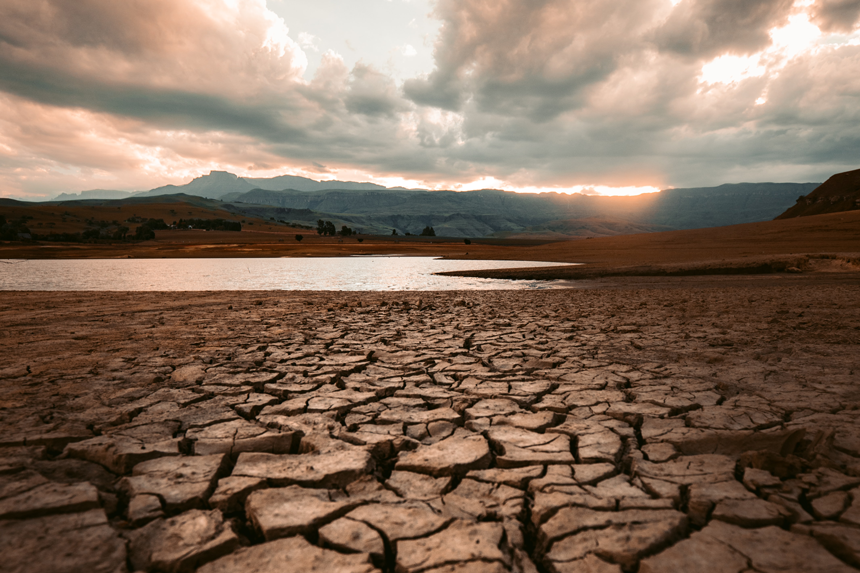Beyond the economic impacts of the recent bushfires, the lasting effect of the recent, unprecedented fire season has been to galvanise climate action in Australia. We have now experienced the severe weather events, deeper, longer droughts and hotter days that climate scientists have been predicting for more than a decade. However, while the risks are coming to the fore, there is much yet to be understood. On Monday, 24 February, the Australian Prudential Regulatory Authority (APRA) announced that work was underway to design a method for climate change financial vulnerability risk assessments. In this article I will highlight the three key points that all businesses should understand in APRA’s statement.[1]


The climate data is readily available
The statement made reference to APRA’s 2018 climate change survey and went on to say, “..this work also highlighted the need to address the climate data deficit, to quantify the likely impact of the physical, transitional and liability risks of climate change and accurately assess and appropriately price these risks.”
There is no deficit of climate data. The CSIRO, BoM and the international climate research community have vast data sets which are available publicly. The challenge business faces is using the data to conduct the modelling necessary to understand their risks over time and under different temperature scenarios. With the right insights and commercial knowledge, climate data can also identify whole areas of new economic activity. The importance of using climate intelligence to drive investment cannot be overstated.
Banks first, other industries to follow – and quickly
Perhaps of greatest significance was the following statement: “APRA will be seeking to undertake a climate change financial risk vulnerability assessment. The assessment will begin with Australia’s largest authorised deposit-taking institutions (ADIs). Beginning with the ADI industry will provide helpful insights on the impact of a changing climate on the broader economy, which will be analysed in conjunction with the Reserve Bank of Australia (RBA). The ADI vulnerability assessment will be designed in 2020 and executed in 2021, with other industries to follow. This timing also aligns with the expected release of international peer regulator guidance on scenario analysis for the banking sector. The vulnerability assessment will involve entities estimating the potential physical impacts of a changing climate, including extreme weather events, on their balance sheet, as well as the risks that may arise from the global transition to a low-carbon economy.”
For the banking sector, the commencement of assessments in a year’s time is remarkably fast; clearly reflecting the importance of the issue for APRA. Prior to the announcement, APRA had discussed climate risk assessments but never set a time frame. APRA’s statement also noted that the risk assessments done for the ADIs would provide “helpful insights” for future assessments across other industries. Given the criticality of the Australian banking sector to all businesses, the findings are likely to be very insightful indeed.
Climate science will inform APRA’s assessments
The announcement stated, “APRA will also seek input from the Commonwealth Scientific and Industrial Research Organisation and the Bureau of Meteorology. The scenarios that will form the basis of the vulnerability assessment will be consistent with practices being developed and utilised by peer regulatory authorities internationally.”
Further to our previous note about the availability of climate data, business should know that Australia’s scientific institutions have the best capability in the Southern hemisphere and an established track record of working closely with the financial sector on climate risk.
Australian science is already working with business
Energetics, together with CSIRO, developed a forward-looking scenario analysis of climate-related factors that could potentially impact Australia's grains, livestock and dairy sectors. Agricultural productivity was simulated under several climate change scenarios to assess the impacts out to 2060, to help CBA better understand potential longer-term risks, and contribute to building resilience in the sector, for example, by supporting investment in adaptation and innovation.
Impacts were assessed on a ‘do nothing’ and ‘adapt’ basis to understand the extent to which the impacts of climate change may be mitigated. The analysis also considered economic impacts, as adaptation requires both investment and the willingness to change established farming practices. Read the full report.
A clear message for business – climate impact assessments need to be conducted
Underlying APRA’s announcement is the message that climate change risk assessments are needed for all businesses. We know that Australia has become, and will increasingly be, hotter and drier, and extreme weather events will be more frequent. The bushfires also brought to light challenges that we did not anticipate. Most notable was the phenomenal scale; these were not bushfires as we have understood them, but a new form of sub-regional firestorm that released so much energy that they changed the local weather to create self-propagating lighting storms that were unstoppable. With this enormous new scale, we saw a range of secondary impacts: communities cut off, the failure of the telecoms and electricity networks, and weeks of intense smoke - the heavy haze impacting the air quality of Australia’s largest cities, Sydney and Melbourne.
With vulnerability assessments planned for all industries, steps taken ahead of time by individual businesses to understand the issue, access the climate science and develop comprehensive responses, will deliver profound benefits. As outlined, Energetics has experience in working with Australia’s scientific communities and applying climate insights to commercial assessments of climate risks. Please contact me or any one of our climate strategy advisers.
References
[1] Australian Prudential Regulation Authority | Understanding and managing the financial risks of climate change






